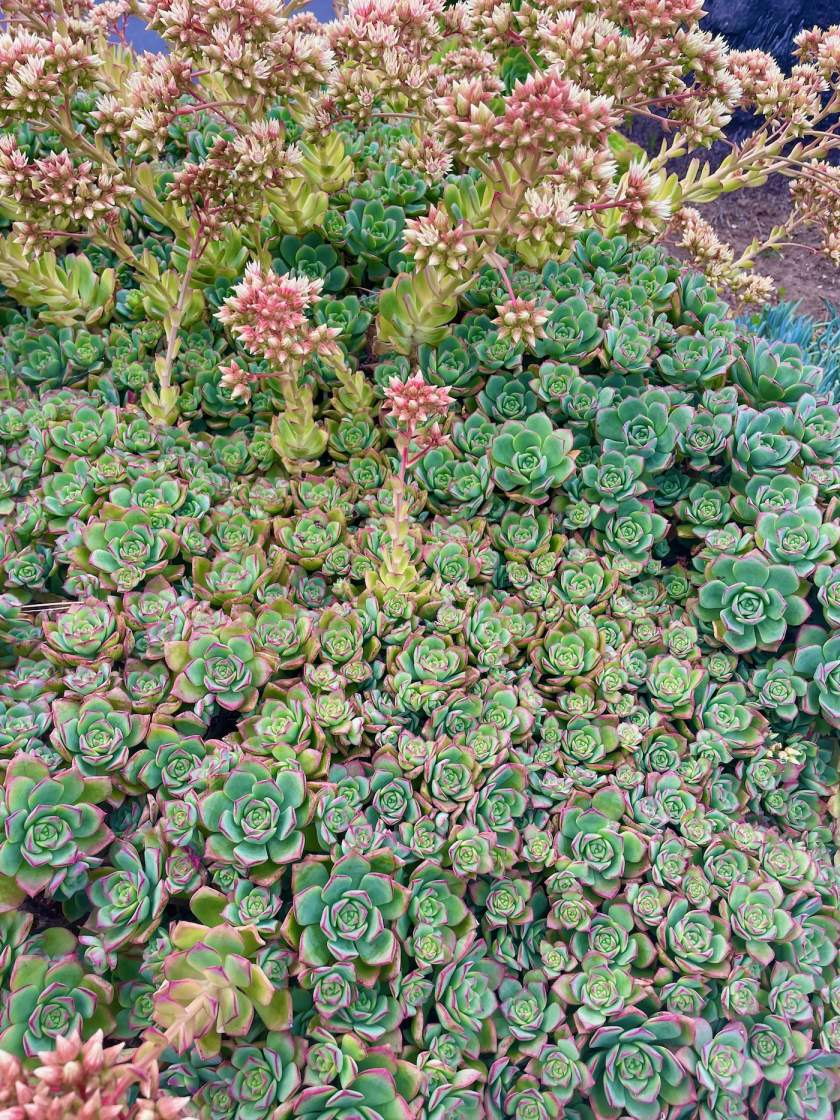Aeonium Haworthii: Unveiling the Beauty of the Pinwheel Plant
Aeonium haworthii, also known as Pinwheel Plant or Haworth’s Aeonium, is a remarkable succulent belonging to the family Crassulaceae. First described by the British botanist Adrian Hardy Haworth in 1812, this slow-growing plant captivates with its spiral pattern of leaves that form rosettes. Let’s explore the characteristics and cultivation of this exquisite succulent.
Characteristics:
Leaves and Flowers: Aeonium haworthii is an enchanting succulent that typically grows to a height and width of 12-24 inches (30-60 cm). However, under optimal growing conditions, it can reach larger sizes, with some specimens known to reach up to 35 inches (90 cm) tall and 39 inches (1 meter) wide. The leaves of Aeonium haworthii are thick, fleshy, and slightly pointed. They grow compactly, forming rosettes that resemble a pinwheel or wheel.
The leaves are approximately 2 inches (5 cm) long and 0.5 inches (1.2 cm) wide. The color of the leaves can vary based on sunlight exposure, ranging from light green to yellow or even brown at the tips under direct sunlight. In low light conditions, the leaves appear dark green. When the plant is under stress, such as during periods of drought, reddish or purple hues may develop on the leaf tips.
In addition to its striking foliage, Aeonium haworthii produces small, cream-colored flowers in the spring. The flowers are borne on panicles, which are loose, hemispherical inflorescences with a length and width of 6 to 16 centimeters. While the flowers themselves are not highly showy, they add an elegant touch to the overall appearance of the plant. However, it’s important to note that the primary ornamental value of Aeonium haworthii lies in its unique and attractive foliage rather than its flowers.
Cultivation of Aeonium Haworthii:
Sunlight: Aeonium haworthii thrives in full sun to partial shade conditions. While it can tolerate some shade, excessive shade may cause the leaves to become pale and elongated.
Watering: During the active growth period in spring and summer, water Aeonium haworthii regularly, allowing the soil to slightly dry out between waterings. Reduce watering frequency in fall and winter when the plant is dormant.
Soil: A well-draining soil is essential for the successful cultivation of Aeonium haworthii. Opt for a cactus mix or a sandy loam mix to provide the necessary drainage.
Pest and Disease Management: Aeonium haworthii is generally resilient against pests and diseases. However, it may be susceptible to infestations of mealybugs and scale insects. If pests are observed, treat them with insecticidal soap or neem oil according to the product instructions.
Temperature: Aeonium haworthii can tolerate a wide range of temperatures, but it prefers mild to warm weather. Protect it from frost, as it is not frost-tolerant. In colder climates, it is advisable to bring the plant indoors during the winter.
Propagation:
Leaf Cuttings: Propagating Aeonium haworthii from leaf cuttings is a common and straightforward method. Start by removing a healthy leaf from the plant and allow it to dry for a few days to form a callus. Then, plant the leaf in a well-draining soil mix. Over time, the leaf will develop roots and give rise to a new plant.
Offsets: Offsets, also known as plantlets, can be utilized for propagation as well. Simply remove an offset from the main plant, ensuring it has developed roots, and plant it in a well-draining soil mix. With proper care, the offset will establish itself and develop into an independent plant.
Aeonium haworthii, with its captivating rosettes of spiral leaves, adds a touch of elegance to any succulent collection or garden. By providing the right amount of sunlight, water, and well-draining soil, you can enjoy the beauty of this remarkable Pinwheel Plant. With its low-maintenance nature and striking foliage, Aeonium haworthii is sure to impress succulent enthusiasts and plant lovers alike.







